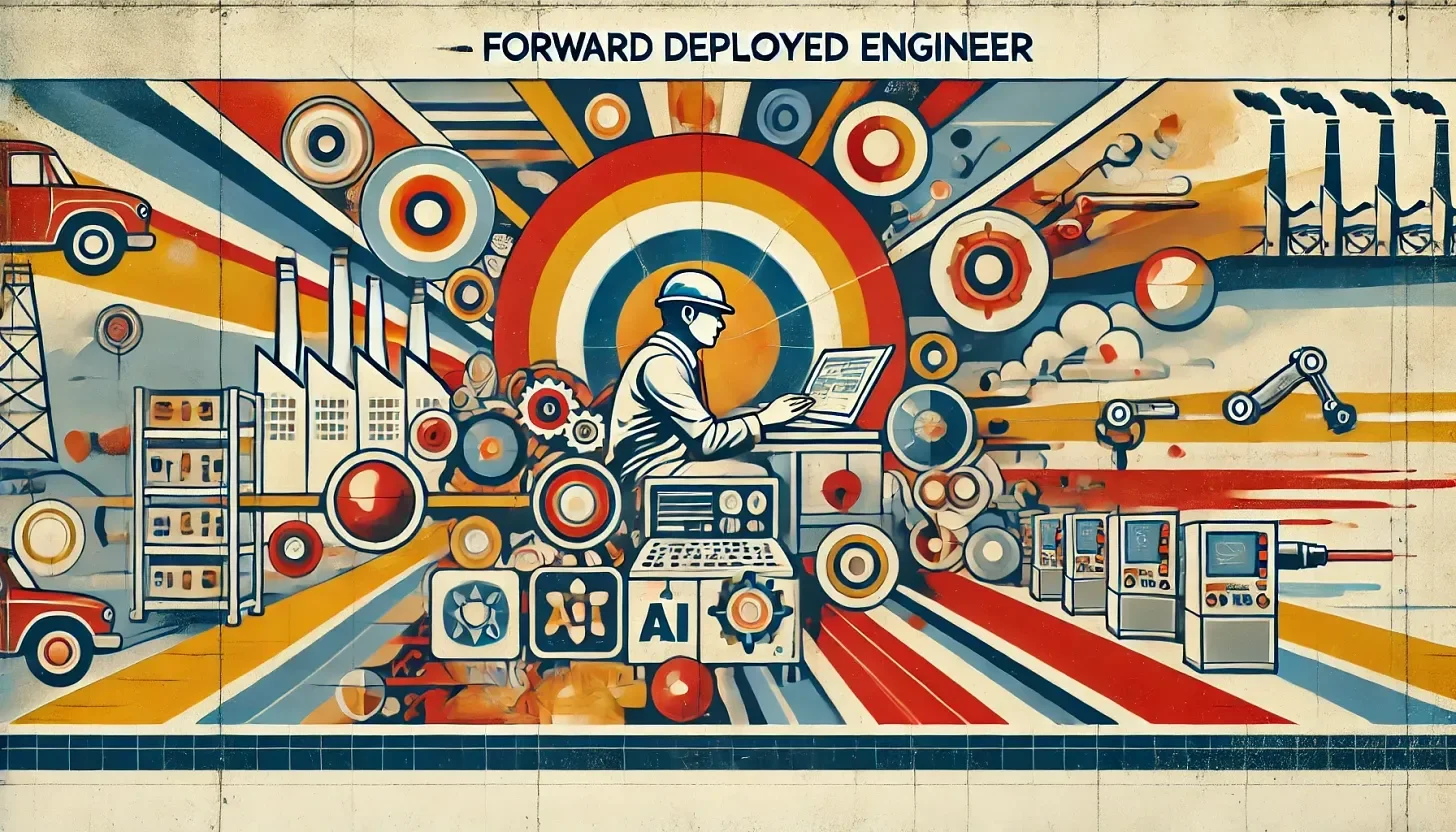Forward-Deployed Engineers in the AI Era
The Strategic Relevance of Forward Deployment
The concept of forward-deployed engineers (FDEs) was popularized by Palantir, which embedded engineers with clients to bridge the gap between complex software and real-world application. By working alongside users, these engineers translated technical potential into operational success and, in turn, shaped the product itself.
That logic is powerful again today. AI is advancing faster than most customers, and even many builders, can process. The frontier of what’s possible is shifting month to month. Having engineers embedded with users helps companies translate rapid technological change into clear customer value and inform the product roadmap in real time.
AI is evolving so quickly that deployment has become part of product discovery. Forward engineers are sensors at the edge of what’s possible.
This bridge between technology and customer needs allows companies to iterate faster, build trust, and define the categories they’re creating.
Why It’s a Smart Move Right Now
Forward deployment is not inefficiency but strategic proximity. It helps founders move faster and learn faster in a market that’s still forming. There’s no faster way to understand your customer, or your product, than to build alongside them. Here’s how it’s helping:
Accelerates learning: Engineers see real-world data, workflows, and failure points up close. That tight loop feeds back directly into product quality.
Builds credibility: In early markets, having engineers on-site gives customers confidence that value will be realized.
Differentiates through delivery: In a space full of AI demos, field engineers create tangible outcomes.
Shapes opportunity: The insights gathered in deployments help define which problems are worth scaling into a product.
Two Sides of the Coin
The same model that accelerates understanding can also hide scalability limits if not managed intentionally. Forward deployment should be a bridge and not a business model. It is smart to use it early on, but it has to evolve into product leverage over time. If every sale needs engineers in the field, you’re scaling people and not software.The goal is to productize the patterns those engineers uncover, turning custom solutions into reusable features. Success means each new deployment requires less handholding than the last.
Economics and Discipline
AI’s cost structure makes this balancing act more critical. In SaaS, the marginal cost per user is nearly zero. In AI, every inference has a real compute cost. Adding embedded engineers on top causes margin to tighten quickly. As a result, AI companies face a double squeeze of tokens on one side, humans on the other.
That’s why pricing and discipline matter. Founders need to know which costs are temporary learning investments and which are structural. Used wisely, forward deployment accelerates product-market fit; used indefinitely, it erodes leverage.
Palantir: The Playbook and the Proof
Palantir is the original case study. Early on, it looked more like a services firm than a software company. For a while, its margins hovered near 60%, weighed down by bespoke deployments. But over time, Palantir productized what its field teams learned, improving margins to ~80% and compounding customer intimacy into defensible software. Palantir is one of the most valuable companies in the world now, which is proof that field proximity can scale, if paired with discipline and patience.
Palantir’s margins weren’t born high, they were earned through years of compounding learning. The difference today is that AI startups must reach that leverage faster, with tighter capital and higher compute costs.
Where It’s Going, Our Hypothesis
Forward deployment should be a phase, not a forever. Forward deployment will fade as products mature, surviving only where complexity demands a human connection. As AI platforms mature and automation improves, most companies will rely less on embedded engineers. The model will persist only in high-complexity, high-stakes contexts like defense, healthcare, or mission-critical enterprise systems where risk and customization justify deep human involvement.
In most markets, today’s field insights will become tomorrow’s product features, templates, and tools. The engineers who once sat beside the customer will be replaced by the intelligence built into the product itself.
The Founder and Investor Lens
Founders using the model well:
Deploy with purpose for learning and do not use it as a sales crutch.
Feed every field lesson back into the core product.
Track how human dependence declines with each new customer.
Price to reflect both compute and field costs.
Investors look for:
Margin improvement over repeated deployments.
Product reuse and automation from early learnings.
Retention after field support tapers off.
Closing Takeaway
Forward-deployed engineers are a smart, necessary bridge for this stage of the AI market. They turn technical potential into customer success and help companies learn what the product and the customer actually need.
Over time, their role will evolve. As products mature, FDEs will fade from most use cases, remaining only where human partnership truly adds value. But right now, they are how great AI companies close the gap between invention and adoption. The winners will be those who turn proximity into leverage instead of dependency.
This model creates product truth faster and the key is turning that truth into code.

